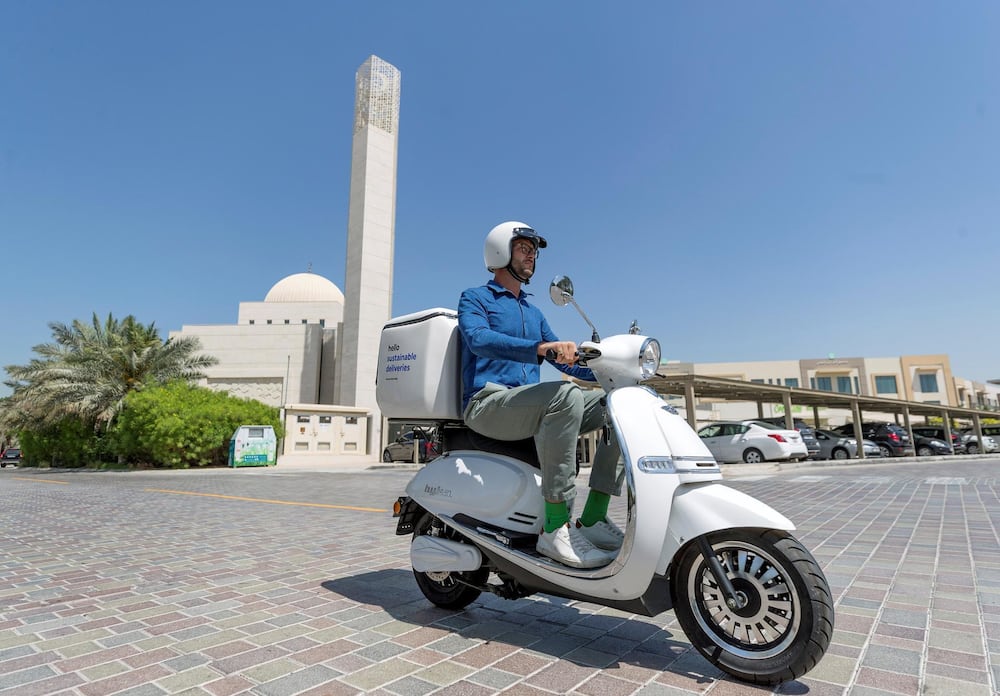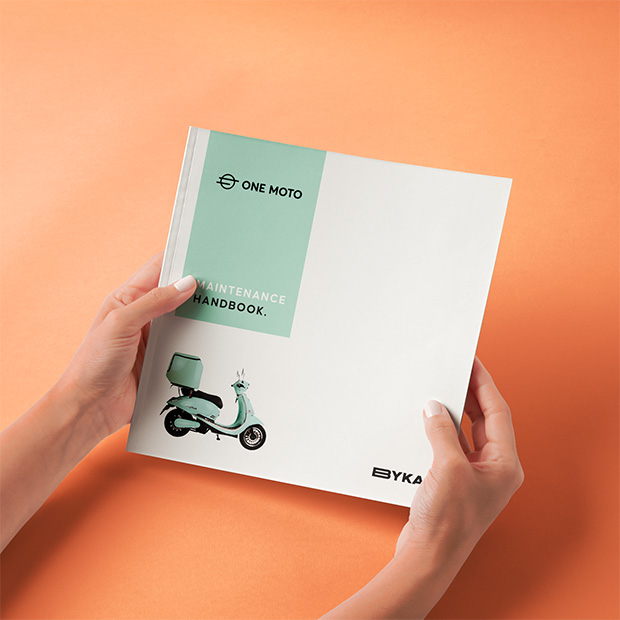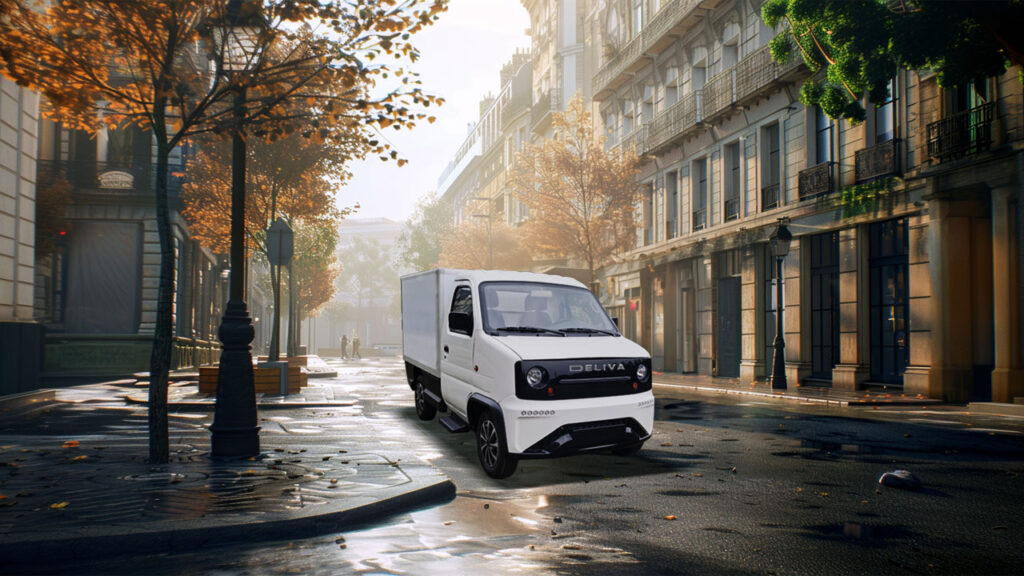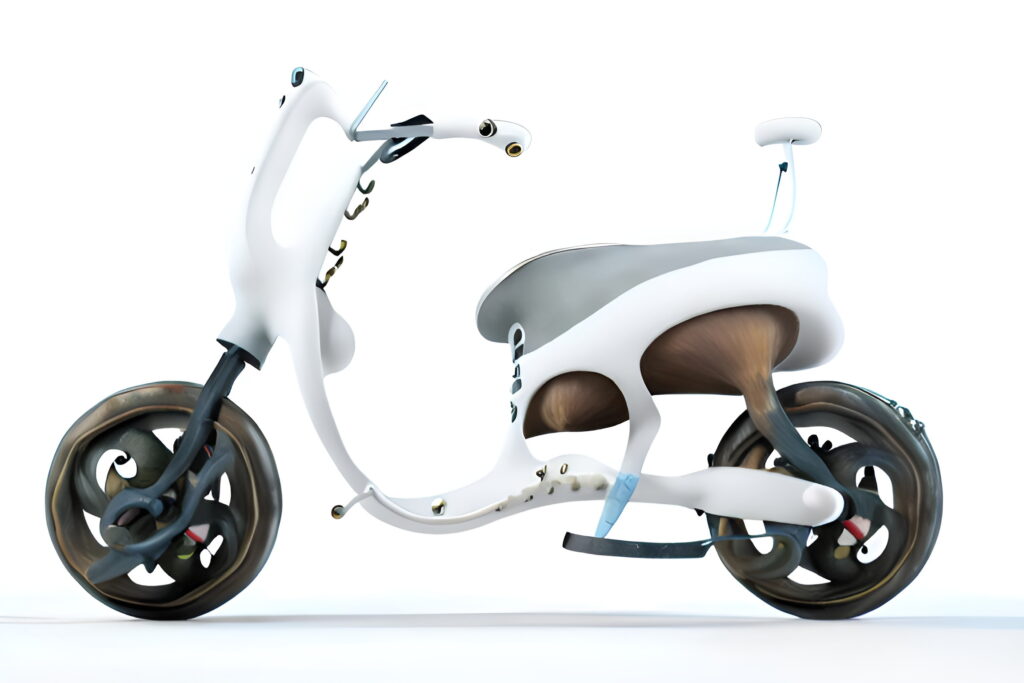Developing a fleet of last-mile delivery vehicles — working alongside some of the world’s largest operators — building the vehicles beyond their needs, I wanted to uncover some of the tribulations delivery riders go through in the UAE, so I took to the roads for a week to realise first-hand exactly the real life of a delivery rider and what the solution is.
Over the past three years (UAE) there have been more fatalities and accidents reported than previous years (12 riders died in April 2020). The question is why, the general opinion is the erratic riders themselves, the roads being a occupied by a frantic slur of ‘phone using’, distracted drivers. But is this really the reason for so many accidents? I took to primary research to uncover the truth, to help the UAE government find a solution to this unnecessary and avoidable series of statistics.
All of us will have driven past dozens of delivery riders every day all sporting their different ‘employers’ colours, the oranges, greens, teal, pink amongst others sat at the side of the main roads, I pull over to many, 70% of them had run out of fuel! Why? I’ll get to that later. The other 30% just needed a rest as they were suffering neck, back and wrist pain. Why? I’ll get to that too.
Hearing these issues and seeing the unrelenting heard of beaten, battered and bruised delivery bikes over my time causes me tremendous concern. As a motorcycle license holder for the past 24 years, I believe I can offer an objective assessment of a motorcycle by ear and eye. The baggy chains, squared off tyres and exhaust noise of these ‘metal work horses’ are not in a safe condition and as research proves, are also not serviced to the levels required or expected by the Roads and Transport Authority (Dubai), and why is that? I’ll address that now.
Each month the average delivery motorcycle travels 3,000kms, requiring servicing of brakes, tyres, plugs, sprockets, oil, filters regularly, yet due to the intense working pressure, many do not service as it eats in to their working hours, affecting the riders earnings.
Approximately 5 hours per month is spent in downtime of the delivery riders in the UAE — yet the working pressure remains.
Highlighting this further, a fleet of 500 vehicles costs AED 265,000 in fuel, AED 215,000 in servicing. Yet who pays these costs? Well (in most cases), the riders pay for the fuel, the servicing is taken care of by the service agreements of fleet operators — one last-mile operator said “it was cheaper to acquire the workshop, than pay the maintenance costs each year” (on a fleet of 353 vehicles).
2020 was the ‘Year of Introduction’ of ONE MOTO. Nominated and winning five awards, doubling sales, keynote speeches and seminars were all a part of the ‘education’ surrounding the brand and the business, most importantly the reason why ONE MOTO and the switch to electric is needed. We spent many months highlighting the environmental benefits (air, noise pollution) yet many companies had some want, but not the need to mandate this transition.
THE SAFETY OF DELIVERY RIDERS IN DUBAI
We then highlighted the safety aspects, which gained attention from regional governments, the valuable data we share with them to reduce ‘accident stats’ increase the welfare of riders, understanding their riding patterns and styles and discover why many were reported to faint! Although the want is there, the need was again void. With safety and welfare the addressable point here is the discomfort and riding position of 12+ hours per day placed on the riders bodies (neck, back and wrist pain), the petrol bikes you see, were not designed for such abundant and consistent daily usage. The ergonomic designs of ONE MOTO alleviate these health problems.
With the data the ONE TEAM analysed the information to understand the real-time cost-savings, increased profitability and this caught the attention of all. We needed to feed the most accurate qualified data for the operators, to showcase the benefits for EVs and what this would look like to their bottom line.
By switching to:
Electric delivery motorcycles (Byka) the cost-savings are 73.8%
Electric delivery vans (Deliva) the cost-savings are 58.6%
What other revisions to an operation could deliver these results? And the CapEx investment would breakeven in 5–6 months.
This wasn’t the story I alluded to in the title “the real life of a delivery rider in Dubai”, so I’ll get to that now.
Many of the delivery riders in the UAE are of mixed language ability, originating from Bangladesh, Pakistan, India and Nepal. However, they have all received the same training in the UAE.
This is where I stick my neck out to offer another objective finding…
Many of the riders I’ve interviewed and surveyed truly do not understand how to ride safely, the fundamentals of the vehicle they are straddling each day and most don’t care, they have a job to do “deliver to as many, as quickly as possible”. RED ALERT!!
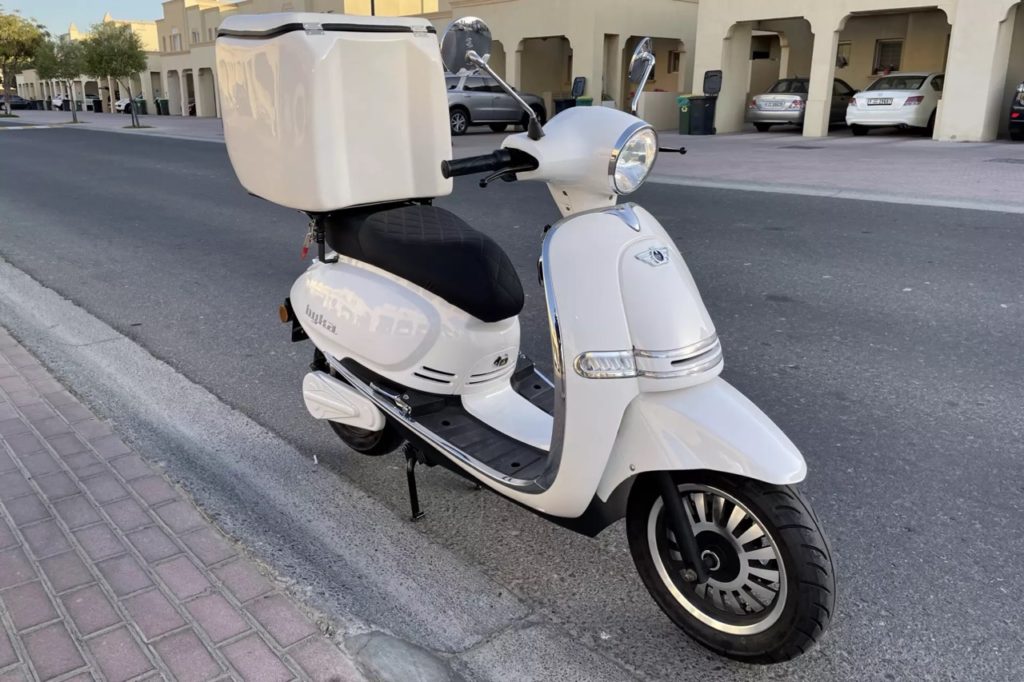
I took to the roads upon a byka offering free deliveries to friends and customers for seven days and the results were drastic.
Car drivers would cut in front of me, honk and disregard my road position, undertaking and causing me to be very aware of them (way more so than on my electa).
My fellow peers (delivery riders) saw and greeted me at the lights, asking questions about the byka, telling me how busy they were, how many deliveries they’d done that week. All interesting factoids, then we were off to deliver goods to the destination (some more safely than others). Four riders in one day had ran out of fuel… I’ll address my earlier point now. Why? Or Why! Several of the riders were given a AED 10 per diem to buy food to help them avoid dehydration, yet as the riders have to pay for their own fuel, they used this to avoid their personal fuel expense! Plus, they “didn’t have time” to stop and refuel themselves! There’s a greater issue that needs addressing.
Day three and I felt like one of my peers, I stopped where a few had collected and started to chat, shaded under a tree we shared stories, of course they were skeptical, and the language barrier added complications, however, my takeaway was these frail looking guys sent their AED 900 to AED 1,800 back to their families each month with ‘disappointed acceptance’. None were begrudging and many mentioned they weren’t happy but “didn’t have a choice”. They felt they had no voice and were in fear of losing their jobs if they spoke out.
Several of the riders I spoke with over the week had spoken out, but nothing was done – six months later they gave up. I also asked them about the change in working conditions over the past 12 months (times of Covid) they had all increased their working hours and kms travelled by 30–40% per day! 20 riders reported they used to travel 120kms, which has increased up to 220kms! At the cost of fuel affecting their monthly salary.
There were many conversations about salary, some not receiving any and getting paid per delivery, others receiving yet had higher costs of vehicle lease, health insurance, motor insurance, even paying their visa costs.
WHAT DO THE RIDERS REALLY FEEL?
One interview I did manage to record was working for one of the most prominent food-delivery companies in the region, these were the bullet points:
“I hate my job” he began by saying.
• Paid AED 7.50 per delivery (the pay structure had changed several times since he started working)
• No health insurance
• Had to pay own visa
• Had to pay own fuel (AED 600 – 800 per month)
• Had to service his old bike every 5 days (1,250kms)
• Customers aren’t respectful.
All of his friends feel the same (not all working for the same company)
His three main concerns: Being respected for the hard work he performs, doesn’t want to live in fear all the time and he wants to be paid enough that his family in India are supported.
Surely this has to stop?! But what is the solution? We clearly understand the problem.
I believe there is one answer, that addresses all three problems; Environment, Safety and Profitability, but this would cause a restructure of operations — which can only really be implanted by regulation change. If the government wants to rid the fatal statistics, support the hyper-growth delivery sector and the welfare of those servicing the industry, a switch to EV really is the answer.
WHAT ABOUT THE CAPEX VS. OPEX CONSIDERATION?
ONE MOTO have run the figures on operating an electric fleet validating the return on investment would breakeven after 5–6 months (conservatively) and 9 months (worst-case). Could this mean the industry’s operators could report profit? Indeed it does!
One customer reported their savings and environmental focus to The National [full article], the video also says it all:
If you are an operator wanting to continue the lease of vehicles then please do get in touch and we can discuss how we can make this possible for you.
The real-time stats will highlight what the industry needs and if you truly have the want and need for a sustainable fleet whether your mandate is environmental, financial or safety — we have the answer, but you’ll need to reach out to discuss how we can work together to make it happen.
With new government regulations surrounding delivery riders and the vehicles published on 5th January this year, the regulating bodies are taking notice, so you can action before a reaction creates an unwanted must for your organisation.
My findings as the real life of a delivery rider was compounded by the insufficient training offered to ‘high in-demand’ riders. The lack of respect on the roads by drivers. So may I ask, give way, respect they are doing a job (just like the rest of us), and the pressures they are going through daily might be comparable to your own.
If you were wondering the kms in my week of “real life of a delivery rider” travelled in that week and the costs associated:
I travelled a total of 1,001 kms costing just AED 10!
Charged up 6 times.
Thank you for reading.
Adam Ridgway
CEO, ONE MOTO
www.one-moto.com
